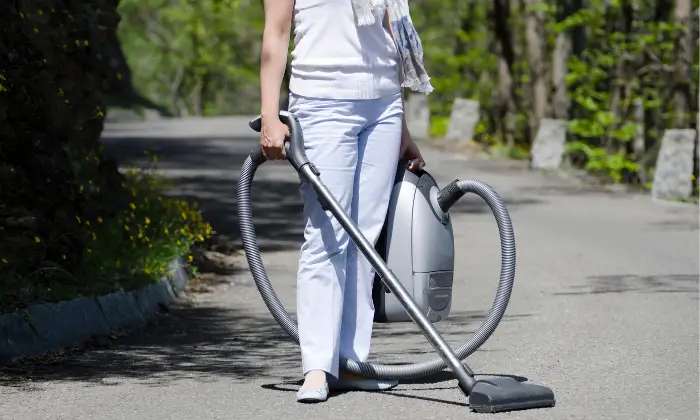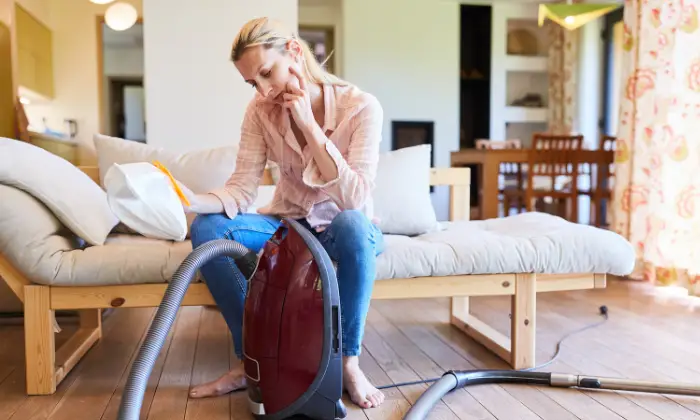
Dust is the most common source of pollution, both indoors and outdoors. It is everywhere, often unseen and difficult to control. Studies have shown that dust particles can enter the body through the nose, mouth, and skin. When dust particles get into your system, they can cause irritation or inflammation. Through this blog/article, we will discuss the most common question: Can you use a vacuum cleaner for dust extraction?
A brief overview of dust and its potential health impacts
Dust comprises tiny bits of dirt, dust mites, and other allergens. Breathing in dust can cause problems such as asthma, bronchitis, and lung cancer. Dust can also contain toxins such as lead, mercury, and arsenic. These pollutants can accumulate on surfaces and corners that are hard to clean. Over time, this dust may enter the body through the skin, nose, and mouth.
In some cases, it can lead to health issues such as infection or chronic inflammation of the lungs. Regularly cleaning dust trails with a vacuum cleaner helps prevent dust accumulation in your home. It also prevents the spread of harmful particles throughout your house.
Can you use a vacuum cleaner for dust extraction?

Yes, you can use a vacuum cleaner for dust extraction. Many vacuum cleaners are specifically designed for dust extraction and have features such as high-efficiency filters to help capture fine dust particles.
Some vacuum cleaners are even equipped with HEPA (High-Efficiency Particulate Air) filters, which are designed to capture particles – as small as 0.3 microns in size, making them effective at removing dust, allergens, and other microscopic contaminants from the air.
To use a vacuum cleaner for dust extraction, simply attach a hose or other dust-collecting accessory to the vacuum and turn it on. Make sure to use the correct settings and attachments for the specific type of dust you are trying to remove.
Additionally, vacuum cleaners with adjustable height settings or telescoping handles make it easier to reach high places for dusting. As a result, vacuum cleaners can be a valuable tool for dusting your home and keeping it clean and dust-free.
How to use a vacuum cleaner for dust extraction

- Choose the correct settings and attachments for the specific type of dust. Different types of dirt require different cleaning cycles, such as dusting, cleaning carpets, or vacuuming carpeted floors.
- Attach a hose or dust-collecting accessory to the vacuum. These accessories enable you to clean different types of surfaces in your home more effectively.
- Turn the vacuum on and begin cleaning. Set the vacuum to the appropriate cleaning mode and adjust the settings as needed.
- Use your vacuum regularly to maintain its performance and effectiveness. This will prevent dust from accumulating and help keep your home clean and healthy.
Tips for effective dust extraction with a vacuum cleaner
Follow these tips if you want to extract dust effectively with a vacuum cleaner.
- Empty the dustbin or bag regularly to maintain suction power. This will ensure optimum suction power and prevent the filter from becoming clogged.
- Clean or replace filters as needed to ensure maximum efficiency. This will help improve suction power and the vacuum’s ability to clean floors thoroughly.
- Use the correct attachment for the surface being cleaned. For example, use a crevice tool for dusting edges and corners of floors, an upholstery attachment for vacuuming cushions and other fabrics, a dusting brush for dusting hard-to-reach areas, and a hose for washing floors thoroughly.
Following these tips, you can extract dust effectively with your vacuum cleaner.
What is the difference between dust extractor and vacuum cleaner?
A dust extractor is a device used to filter dust and debris from the air. It consists of a rotating drum, an air filter, a hose, and a collection chamber. The air filter absorbs dust particles and other impurities
while the collection chamber holds them until they can be disposed of. Dust extractors are typically less expensive than vacuum cleaners but work very similarly. They use a rotating drum to collect dust and debris from the air, which can be easily disposed of.
A vacuum cleaner uses a motorized pump to create high pressure and surgery to collect dust and debris. Vacuum cleaners are – best for large areas like whole houses, as they can quickly clean large areas.
On the other hand, dust extractors are better for smaller areas like single rooms, as they offer better filtration of fine dust particles. If you have allergies/asthma, it’s important to consult a medical professional before using a vacuum or a dust extractor.
Frequently Asked Questions:
Q: Can you use a regular vacuum for sanding dust?
Yes, you can use a regular vacuum to collect sanding dust. However, choosing a vacuum with a high-efficiency or HEPA filter is important to capture the fine dust particles produced during sanding effectively. Regular vacuums with lower-quality filters may not be able to capture the fine dust particles effectively and may even blow them back into the air, potentially causing respiratory issues.
Using a vacuum with a hose or other dust-collecting attachment specifically designed for sanding dust is also a good idea. These attachments can help to capture the dust more effectively and prevent it from escaping into the air.
Finally, it is important to properly maintain your vacuum by regularly emptying the dustbin, replacing the dust bag, and cleaning or replacing the filters as needed. This will help ensure that the vacuum operates efficiently and can effectively collect the sanding dust.
Q: Is it OK to vacuum sawdust?
Vacuum sawdust can effectively remove dust and debris from a woodworking project. Make sure to use a filter on your vacuum cleaner to reduce the amount of sawdust that is inhaled. Alternatively, you can dust the area with a broom before vacuuming.
Conclusion
Vacuum cleaning can be a good option for dust extraction. However, it is important to note that dust extraction is not a substitute for dust control measures such as dust suppression and ventilation. Thus, vacuum cleaning should be used in tandem with dust suppression and ventilation in order to get the best results. If you want to learn more about dust extraction, visit our blog on the subject here.




